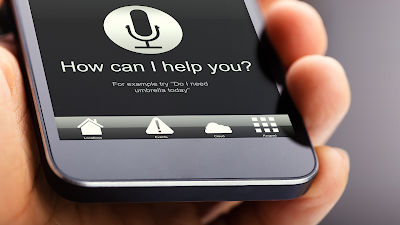How To Be a Brand not Just a Business in the Present-Day Business World:
Business and brand are confusing terms in entrepreneurship, especially as a freelancer, solopreneur, startup company, or a small, medium, or large-scale company. Why then should you be a brand, not just a business, and how? These questions leave most entrepreneurs stuck in the middle of nowhere in the market, with most businesses dying in their second year of operation. However, in simpler terms, as a freelancer and solopreneur, the best way is to create and build a brand around your business for more creative and easy marketing efforts. The logic is that business is activities, and brand is the identity that promotes and markets your business. And any business venture can never be a brand without a clear purpose and value proposition statement. A brand is your business identity. It is how you present the business in the world.
What is Business?
A business is a company that provides services, produces, and sells products or goods. It is the old traditional way of identifying enterprises that are into trading. That businesses do for profit making. That way, the term business comes into play with no creativity in operations and processes to boost productivity and sales. Its mode of operation is a 9-5 job description. Most businesses know no creative marketing but just sales.
What is a Brand?
A brand is a business identity. It is how you present it on the market, the tone, voice, visuals, and style of your business. It is how people identify and connect with the brand for a life-long business relationship. It is the image of your business to the world and in the market. It is the modern entrepreneurial way of being creative and innovative in running and operating enterprises.
Why You Need to Become a Brand in the Business World?
A branded business is more interesting to market and easily recognized because of its visuals like the logo, color palette, tone of voice, and branding style in what it does and provides. A brand is solid, and you build it on a solid foundation based on a clear vision and mission statement. That is easily translated and clarified in a clear purpose and a unique value proposition statement of the business. Here are the five ways you can build a brand, not just a business company.
Positioning Your Business:
Branding helps for credibility and establishment in the market. It allows you to spell out your values with conviction. You cannot position your business without solid branding. What value does your company bring? The main factors for positioning your brand are the characteristics of your products or service, the pricing, quality, use and application, and competition. How unique are you providing value that cuts through the noisy market and marketing noise? That way, establish your Unique Selling Position. What makes your product or service different and more attractive to go for by your target consumer and audience.
Competitive Advantage:
A branded business can easily be a force of recognition on the market. Business becomes more exciting when you compete with yourself in high-value products and services by establishing key differences and comparativeness. Your products or services become unique with competitiveness by providing customers with an optimal experience, loyalty, and quality sales.
Avoid blending with everything and everyone. Give something that you know your target audience likes and is unique and of high value in their life. Like right here, I know most entrepreneurs in the present-day world need to create brands that will stand out from the crowd and be solid enough to withstand economic crashes of the present-day woes like the COVID pandemics of this world
With that in mind, I believe in online presence through content marketing, specifically blogging for brand expertise, authority, and longevity in business. Be clear whether you are going to make your products better, cheaper, and readily available than your rivals or whether you are going to make your products or services more superior, high-value ticket, and exclusive to an exclusive clientele. A tribe that reveres your brand and is loyal to spending their money on your brand will guarantee the sustainability and longevity of your business.
Pricing:
Pricing is a branding strategy. Your pricing must enhance your brand objectives. It should not conflict with your brand objectives, or it will compromise and destroy any brand-building efforts. Your price is part of your brand image. Pricing is a translation of the monetary value of your product to your target market and audience. Must therefore communicate the quality of your product and benefit to the target audience. Pricing also translates what you want your pricing to achieve. That could be profit-oriented pricing, competitor-based pricing, or market penetration pricing. Profit Orientation Pricing focuses on selling many units to maximize profit.
Like Walmart has built its brand around low pricing. With competitor-based pricing, you set your pricing to attract and appeal to a unique group of clients willing to pay exclusive high prices in return for superior products and services. Tiffany & Co is an example of competitor-based pricing whose consumers expect high-end pricing for quality and exclusivity. Then the market penetration pricing is low price offerings to get people to try your products and build a reputation for charging more. With the skimming pricing strategy, you can charge high prices initially. And lower the pricing that will attract the same people who are willing to pay more.
Quality:
The quality of your product and service is the main factor in branding. The quality determines the market value of your product or service on the market. It also helps in identifying the right target market. A high-quality product or service helps in giving you confidence in positioning your products and services with the conviction that they will help in people’s problems. Quality products and services ensure strong positioning and competitive advantage with high-paying clients for sustainable profit margins where the target market is small. But high value returns due to high pricing with clients of high value. If your products or services are high-end and renowned and revered for their quality, your target is likely to include customers of high-income levels. Likewise, if people perceive your products or services as having lower market value, you might target the budget-conscious sector with a low-price message. So, for a stronger brand, you need to aim for quality. That will allow for targeting fewer clients with high-profit margins and high returns.
Functionality and Usability:
Most startup companies and freelance developers find this as the most pricing and marketing strategy. The confidence and clarity you have in how your product works, especially when it comes to software products and applications, the easier it becomes to brand and position it as a brand on the market. Functionality and usability are the best strategy for branding. Unique features and high quality would make customers want to buy your products and be the first to have them for status and recognition. Branding and function come into play when your product proves to work the way it should and how your marketing messages claim. It is also for your products to be guaranteed functionality and usability. That is their ease of use which improves user experience. The functionality test is whether your product works the way it should and the way you promise in your marketing messages. Like many functions in one interface can be confusing to learn to use.
Does the product or app work efficiently? With ease to help users meet their goals and needs? And their usability test so that the end user can access those functions and successfully use the product to improve the user experience. Whether it is an app, chair, desk, book, or web interface, functionality and usability determine branding efforts. How is it useable concerning its intended purpose? The main feature of usability is its appeal to the human aspect of being practical with no guesswork on the user. Is it navigable, and does it do the work you intended? That way, your brand establishes a reputation for longevity in business.
There we go. Those are aspects that help in branding a business. With those aspects pursued, your business will prove to be a strong brand that will make people rush when any need arises for your products or services in their life and business.










Comments
Post a Comment